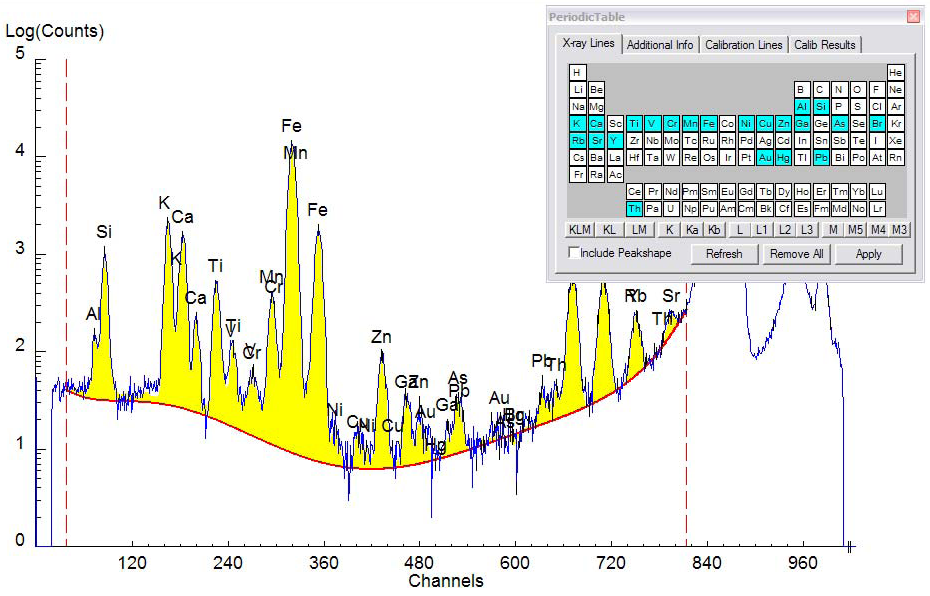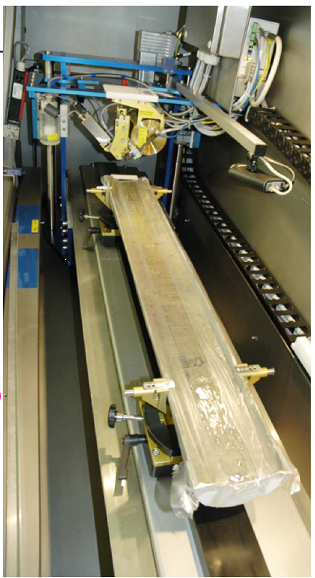Welcome
To illustrate the usage of XRF we show an arbitrairy XRF spectrum below. With XRF, a spectrum like this is acquired by bombarding material with X-rays using some X-ray source. The fluorescent radiation is picked up by a sensor, of which a spectrum can be constructed. Indicated at the peaks in the spectrum are a set of elements, which are assigned to each of these peaks based on knowledge concerning the electron energies.

Although generally XRF is applied to pulverised and homogenised samples, it was found that with the adoption of a portable source/sensor combination that acquires a spectrum directly at the materials surface, reliable spectra can be achieved. This new way of applying XRF also led to new applications, of which scanning of sediment cores is one of them. For the application of XRF to sediment cores, a device with a moveable source/sensor combination is shown in the figure below, which is an Avaatech Core Scanner (www.avaatech.nl). Although XRF core scanning provides a powerful method to explore sediment cores, one should keep in mind that the acquired spectra only represent a small portion of the material; penetration is in the order of microns to millimeters.

With the succes of in-situ XRF data acquisition, a truely powerful method is born, leading to new possibilities for sediment core logging. Since XRF core scanning is relatively inexpensive and non-destructive, a downcore record of a sediment core can be acquired relatively easy and fast and, more importantly, without destroying this very expensive core. As such, XRF provides insight into the geochemical variation in the sediment.